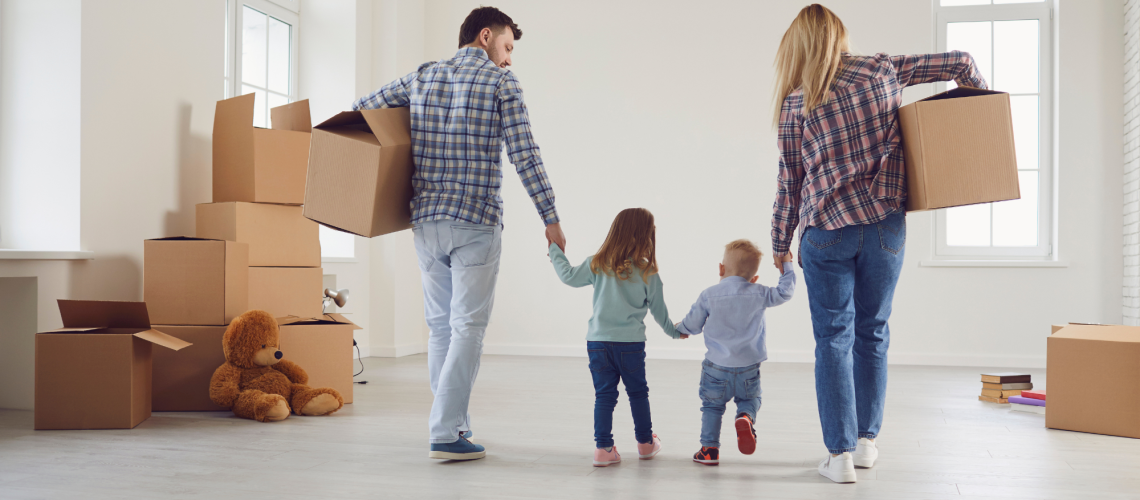By Samantha Wilson – Good Night Consultant
Moving house can be an exciting yet challenging time for families, particularly when it involves children. Children often form strong attachments to their home environment, friends, and routines, making the process of moving unsettling for them. It falls upon parents to employ effective strategies that help children navigate this transition with minimal stress and anxiety.
The area and house itself will have minimal impact for a baby when you move. However, the reality is that for you as parents, the move can be very stressful, and this stress can have an impact even on a baby!
Things to remember:
1. Open and honest communication
Even with toddlers, it is important to have transparent communication when informing them about an upcoming move. Parents should initiate discussions well in advance, allowing ample time for children to process the information and express their feelings. The older your kids, the more time they will need to adjust. Age-appropriate conversations can help children understand the reasons behind the move and provide reassurance that their concerns and emotions are valid and acknowledged. Encouraging questions and actively listening to their thoughts will foster trust and reduce anxiety.
2. Familiarising children with the new house
To alleviate the fear of the unknown, it is beneficial to familiarise children with the new house and its surroundings. If feasible, visit the new house together before the move, exploring the neighbourhood and nearby amenities. Highlight the positive aspects of the new location, such as parks, schools, or recreational facilities, to inspire a sense of excitement and anticipation. Sharing photographs or floor plans can help children visualise their new living space and mentally adjust to the change.
3. Involvement in the decision-making process
Empowering children by involving them in certain decision-making aspects can foster a sense of ownership and control. For instance, allow them to choose the colour scheme for their new room, select new furniture or décor, or decide on the layout of their personal space. By participating in these decisions, children will feel more invested in the move and perceive it as an opportunity for self-expression and creativity.
4. Maintaining routines and familiarity
Maintaining routines and familiarity is especially important with babies and toddlers. Children thrive on routine and familiarity, which provide stability and a sense of security. Amidst the chaos of packing and moving, it is crucial to maintain established routines as much as possible. Continue regular mealtimes, bedtime rituals, and extracurricular activities, ensuring that children experience a sense of normalcy amidst the changes. Familiar belongings, such as favourite toys, blankets, or books, should be readily accessible to provide comfort during the transition.
5. Emotional support and validation
Moving can evoke a range of emotions in children, including sadness, anxiety, or even excitement. It is vital for parents to offer emotional support, validating their feelings and providing a safe space for expression. Encourage children to express their emotions through age-appropriate means, such as drawing, journaling, or talking. Reassure them that it is natural to feel a mix of emotions during such transitions and emphasize that the family is there to support and understand them.
6. Preparing for moving day
On the day of the move, it is advisable to arrange childcare or enlist the help of trusted family members or friends. This will allow parents to focus on the practical aspects of the move without overwhelming children with the flurry of activities and potential disruptions. Ensuring a smooth transition during moving day will alleviate stress for all family members involved.
Moving house can be a complex process, particularly when children are involved. By employing the above strategies, parents can help their children navigate this transitional phase with resilience.
#sleeptraining

